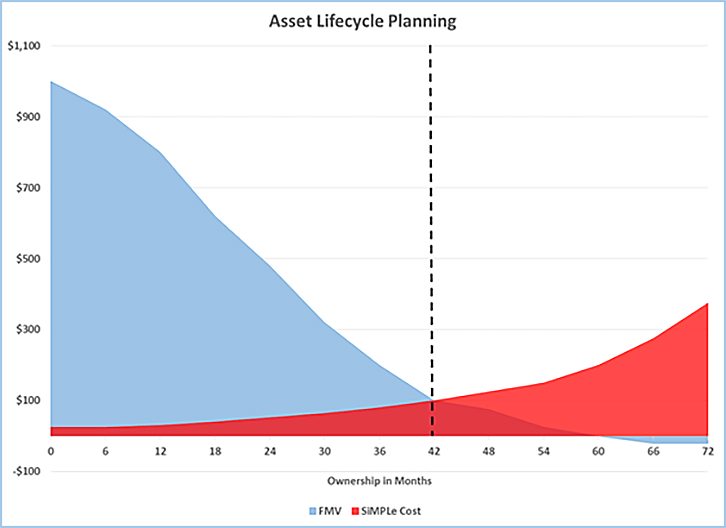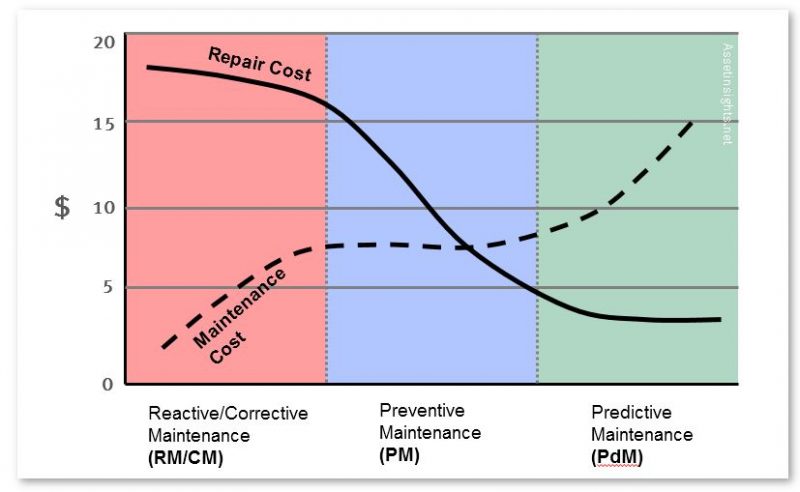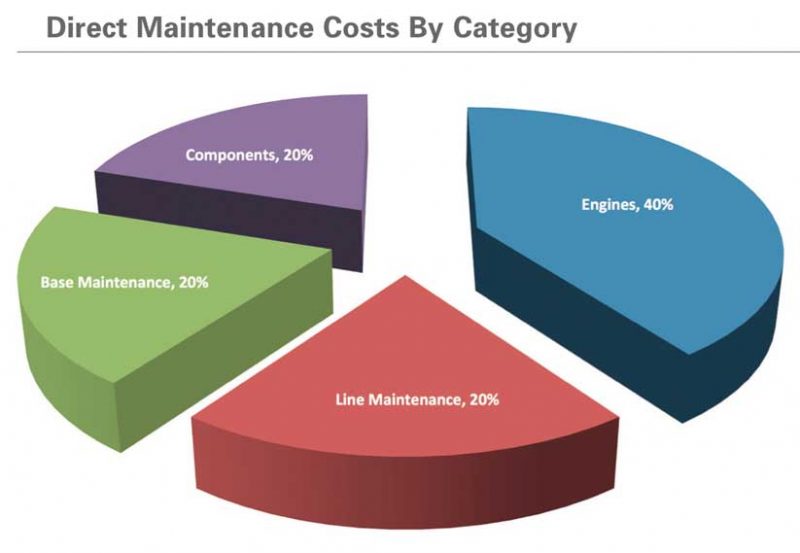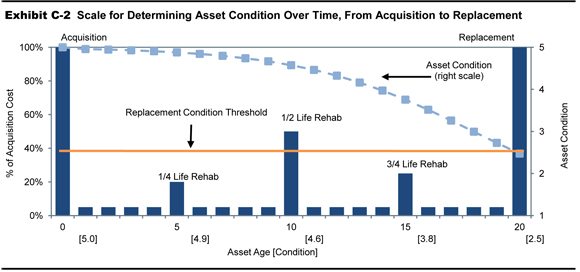
Maintenance Cost vs Asset Replacement Value RAV
Is your annual production plant maintenance cost running at more than 3% of your Replacement Asset Value (RAV)?
When you get your maintenance costs down to 2% RAV you join the list of the world best maintenance practitioners. Bring your maintenance costs down to 1% RAV and you will be the world best maintenance practitioner.
Excess Logic continues reposting interesting articles about asset management, surplus equipment maintenance, cost of maintenance, hi-tech, startups and new technologies to draw your attention to the importance of e-waste recycling of used computers, lab, R&D, biotech, test equipment and unwanted data center equipment. Please ask your facility and IT manager to stop disposing of used equipment into a dumpster. Ask them to call (408)-403-5549 and recycle used equipment with Excess Logic for Free.
You’ll want a sure path and the best methods to get your company RAV ratio down to 3%, then 2% and finally 1% of maintenance cost as a percentage of RAV and reach the heights of operational and maintenance success.
You can surely get there with the right mix of physical asset management, maintenance management and reliability improvement processes combined in an outstanding Accuracy Controlled Enterprise work quality management system.
Lifetime Reliability Solutions (LRS) Consultants use the Plant Wellness Way methods, tools and practices for the quickest way to Operational Excellence performance.
The Plant Wellness Way methodology gives you a simple solution to installing world class practices and the best business processes into your company to get Operational Excellence results.
Maintenance Cost as a proportion of Asset Replacement Value (RAV)
Maintenance cost as a percent of Replacement Asset Value (RAV) is the universal benchmark measure of operating asset performance success.
Learn how to recover your investment in capital and electronic equipment
The RAV tells you how well your expenditure on capital equipment is being looked after. At 20 percent of Replacement Asset Value you spend so much on maintenance each year that you can buy completely new plant for your operation every five years. At 2 percent of Replacement Asset Value you will be in operation for 50 years before your maintenance spend is worth the cost of getting a new plant.
At high RAV your plant and equipment is very expensive to maintain and reflects either 1) aggressive products and environment, 2) very poor operating and maintenance practices, or 3) you bought yourself a ‘dog’ of a plant and now you are stuck with it for years to come.
3% RAV can be reached with the right business processes, tools, skills, knowledge and spirit within the maintenance department.
2% RAV can be reached when operations and maintenance team-up and start using the right processes, systems, tools, skills, knowledge and spirit.
1% RAV requires totally new mind-sets and paradigms throughout the business about the way to design, operate and manage your operation.
A simple financial model will help you to relate better to what is possible with your plant and equipment performance.
How often do you want your family car to breakdown on the side of the road? Would you go on a long five-day drive with your family if you are sure that the car you drive could breakdown anywhere along the way? Would you be happy for it to breakdown at any place, and at any time?
They are dumb questions! You want your car to go brilliantly until you turn the engine off at your holiday destination. So why should it be any different with the plant and equipment in your business? Are you unsure that for all of next week every piece of your production equipment will run trouble-free at full duty? Running a business by luck is not a good way to stay in business for long!
In April 2002 a renowned manufacturer’s new family car in Australia cost AUD$30,888. The car is designed to have a service every 15,000 kilometres (9,000 miles). The average annual mileage for a regular mid-sized car used by the average family is 20,000 kilometres (12,000 miles). Over three years the car, on average, will travel 60,000 kilometres and have four services. The dealer can provide you with the standard maintenance costs for each type of service the car requires.
The other maintainable components replaced during normal operation are the tyres. An average tyres last around 80,000 kilometres (50,000 miles). Four suitable tyres installed and aligned cost AUD$650.
The information is listed in the table below. From it you can work out the ‘designed’ cost of having the car and its ‘planned’ maintenance cost as a percentage of replacement asset value.
Original cost of car = AUD$30,888 |
||||||
Years of age |
Distance Travelled in kilometres |
Service Cost AUD$ |
Tyres Cost AUD$ |
Total Annual Cost AUD$ |
Annualised Cost AUD$ |
Percent RAV |
|
0.75 |
15,000 |
155 |
0 |
155 |
207 |
0.7 |
|
1.5 |
30,000 |
202 |
0 |
202 |
238 |
0.8 |
|
2.25 |
45,000 |
238 |
0 |
238 |
264 |
0.9 |
|
3 |
60,000 |
155 |
0 |
155 |
250 |
0.8 |
|
3.75 |
75,000 |
202 |
650 |
852 |
427 |
1.4 |
|
4.5 |
90,000 |
238 |
0 |
238 |
409 |
1.3 |
|
5.25 |
105,000 |
155 |
0 |
155 |
380 |
1.2 |
|
6 |
120,000 |
202 |
0 |
202 |
366 |
1.2 |
|
6.75 |
135,000 |
238 |
0 |
238 |
361 |
1.2 |
|
8 |
150,000 |
383 |
650 |
1033 |
433 |
1.4 |
If the maintenance costs of a family car are 1% to 1.5% of its Replacement Asset Value each year to run, why doesn’t industrial plant and equipment also cost that little to maintain?
Learn how to save money on surplus inventory management in San Jose, Santa Clara, Milpitas

There is absolutely no reason that operating plant and equipment as complex as a modern family car cannot be maintained at 1% of its Replacement Asset Value. Even in aggressive mining environments phenomenal improvements in RAV are possible. But first you have to learn to think and behave differently to what you now do—you have to understand how to design and treat your machines and business processes so they can deliver you world class RAV.
You can view an on-going experiment that I run to check the maintenance costs as a percent of RAV for my current car at my car maintenance costs.
How to get maintenance cost down to 3% of Replacement Asset Value
At 3% of Replacement Asset Value you are closing in on the world’s best maintenance practitioners!
This level of accomplishment is possible when the right thinking, the right methods, the right practices and the right attitudes are proactively adopted in the maintenance department.
How to get maintenance cost down to 2% of Replacement Asset Value!
At 2% of Replacement Asset Value you are in the forefront with the world’s best maintenance practitioners!
This level of accomplishment is possible when the right thinking, the right methods, the right practices and the right attitudes are proactively adopted and used throughout both operations and maintenance who now work together as a well knit team.
How to get maintenance cost down to 1% of Replacement Asset Value
At 1% of Replacement Asset Value you are the front runner of the world’s best maintenance practitioners.
This level of accomplishment is possible when a quantum change in business thinking and practices are adopted in operations, engineering and maintenance. It is why we invented the Plant Wellness Way. When you adopt the Plant Wellness Way your operation uses scientific discipline under a regime combining Lean efficiency improvement, Six Sigma process effectiveness improvement, life cycle asset maintenance management and a quality management system to lock all your improvements into place permanently as standard business practice.
How to calculate replacement asset value (RAV)
You can determine your maintenance cost as a percentage of RAV for yourself with the following equation.
Percent of RAV = Annual Maintenance Cost x 100
Maintained Assets Replacement Value
There are time related issues that you need to address to determine a current maintained plant RAV that is acceptably close to the real value. RAV means exactly what is says: today’s cost to replace your existing plant with brand new, identical equipment.
It will be impossible to get an exact duplicate plant because equipment manufacturers change their designs, they innovate the production process, they substitute new materials with better properties for old materials, and construction labour and equipment rates change. But you only need a value that is acceptably close to today’s value. To me acceptable close means within 10 percent of the real value.
If your operating plant is less than ten years old just use the original capital cost of your maintained plant. The same plant will be built for less cost today than it was back then, but the difference in costs is not likely to be great.

Learn how to reduce maintenance cost by replacing obsolete equipment in Sunnyvale
If your plant is more than ten years old things get complicated. You can increase the original asset values by the average annual inflation for each year since they were built (i.e. a compound value calculation), but you will not be right by a long margin, because the costs of manufacturing will be less today from the effects of innovations that manufacturers, designers and construction contractors introduce. The labour rates will probably track inflation, and maybe even a little more in some industries, but even with labour, modern innovations make labour more efficient today than that of years ago. The same plant built today will be built for much less expense than using the original capital cost inflated up to today’s date.
Plant older than ten years needs alternative ways to determine the RAV than on younger plant. One way is to get the current asset values of your maintained plants from the accountants or insurers (they should regularly revalue the plant and equipment for taxation and insurance reasons). You do not want the depreciated value, rather you want the current asset value as if the operation burnt down and had to be totally rebuilt after the fire.
If the current asset values are several years old you may need to compound them up to a value representing that for today.
One other way to get an estimate of current replacement value of a plant is to use parametric estimates, where statistical relationships of costs across already built plants are used to estimate the cost of building another similar plant. You would track-down several new plants recently built that have similar equipment and processes to your plant and by applying parametric estimating you can arrive at a believable value to replace your operation using current day costs and methods. It is a well used capital project estimating technique and plentiful information is available on the method.
You should also do the replacement asset value estimation in each of the various ways—original full capital cost adjusted for average inflation; current asset value adjusted for average inflation and a parametric estimate—to see how wide is the discrepancy. Then you need to make a judgement call and go with it as a starting point.
Finally, divide the annual total maintenance cost by the RAV (the total cost is the sum of all direct and indirect maintenance costs that you incur to maintain your plant and equipment (See FAQs: Defining maintenance costs for RAV calculations). The percentage figure that results will be as close as you can get to your current maintenance cost as a percentage of RAV as current information allows you to achieve.
Purists will argue that your RAV is not right. It never can be right because it contains estimated values that always change. It only needs to be within plus or minus ten percent of actual value to help you understand if you have problems with your business and where they might be hiding.
It probably is more important that you establish a benchmark RAV with which you can measure your improvement (or back-sliding) each year in a standard, consistent way, than spend months playing with imperfect numbers.
As you get more comfortable and conversant with your asset values you will naturally change and improve the accuracy of your RAV estimation.
One other issue that you may need to address is to separate the cost of maintenance for civil and structural assets from that for mechanical assets. Mechanical asset cost more to maintain because their parts move. They wear-out faster and require more maintenance than stationary assets. Stationary assets like tanks, silos, buildings, roads, etc have vastly different maintenance costs to machinery. You probably should do a separate RAV for each category, as well as having a combined RAV for the Operation.
By Mike Sondalini, Managing Director Lifetime Reliability Solutions HQ
Source
